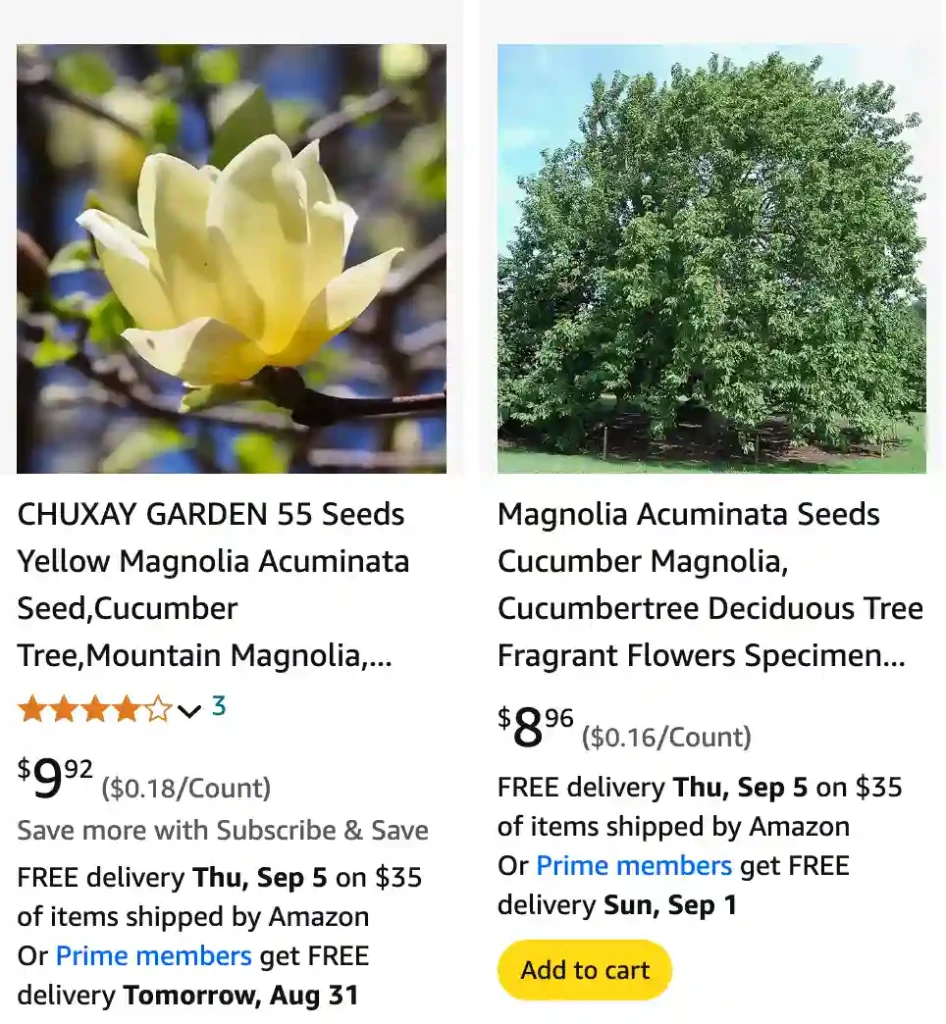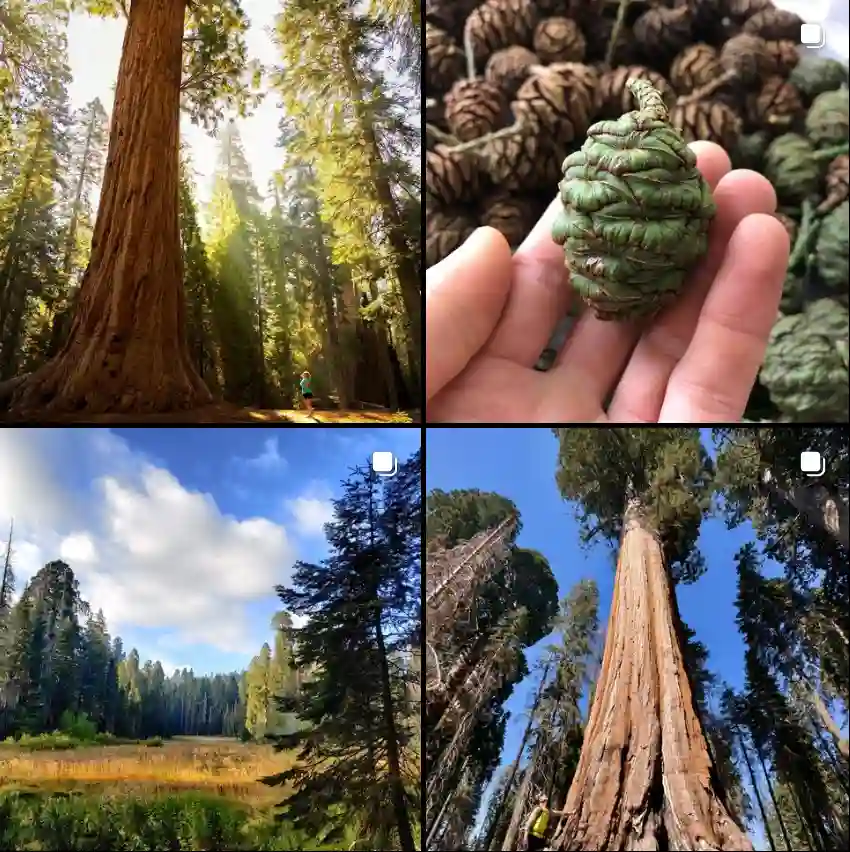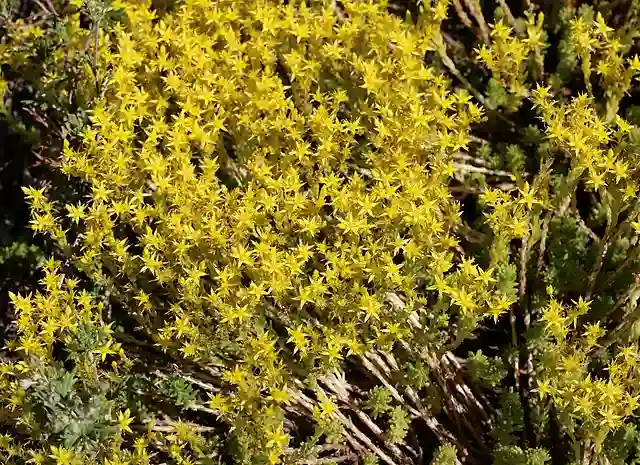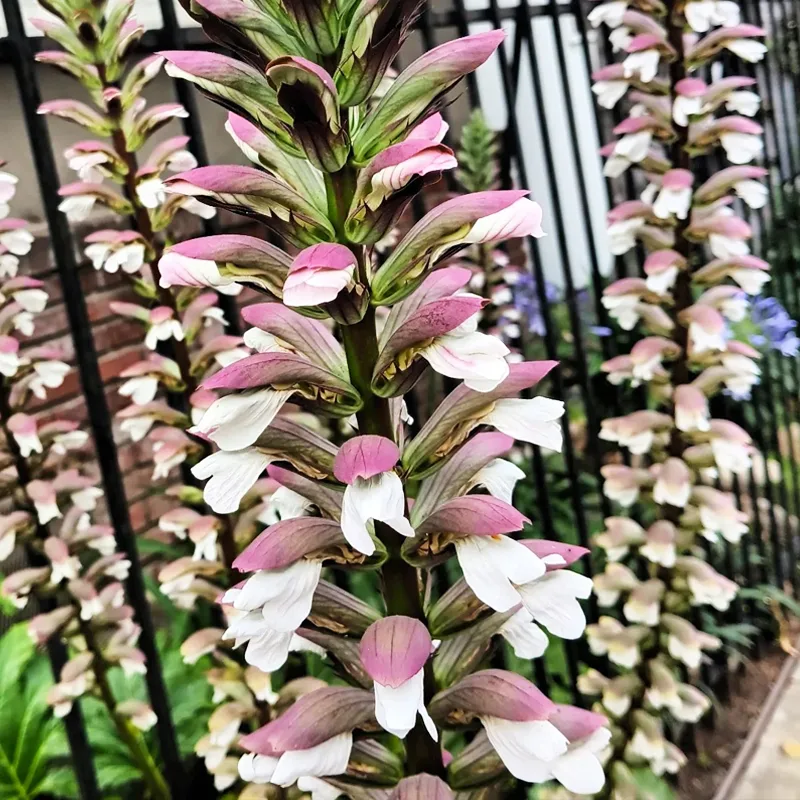
What Is Magnolia Acuminata?
Magnolia Acuminata, commonly known as the Cucumber Tree, is a deciduous tree native to eastern North America. It’s known for its unique, cucumber-like fruit and its large, vibrant green leaves. The tree can grow up to 60 feet tall, and its striking yellow-green flowers appear in late spring. Magnolia Acuminata is a beautiful addition to any garden, valued for its ornamental beauty and shade-providing foliage.
371 Species in Genus Magnolia
How to Grow Magnolia Acuminata?
Growing Magnolia Acuminata is relatively straightforward if you provide it with the right conditions. Here’s how I’ve successfully grown this tree:
- Site Selection: Magnolia Acuminata thrives in full sun to partial shade. Choose a location with well-drained soil. It can tolerate a range of soil types but prefers loamy soil with good organic matter.
- Planting: I plant the tree in early spring or fall when temperatures are mild. Dig a hole that is twice as wide as the root ball but no deeper. Place the tree in the hole, making sure that the top of the root ball is level with the ground surface. Backfill with soil and water thoroughly.
- Watering: Water the newly planted tree regularly, especially during dry spells. Mature trees are relatively drought-tolerant, but consistent moisture is beneficial.
- Mulching: Apply a layer of mulch around the base of the tree to retain moisture and suppress weeds. Keep the mulch a few inches away from the trunk to prevent rot.
How to Care for Magnolia Acuminata?
Caring for Magnolia Acuminata involves regular maintenance and monitoring. Here’s what I’ve learned:
- Pruning: Prune the tree in late winter or early spring before new growth starts. Remove any dead, damaged, or crossing branches. This helps maintain the tree’s shape and health.
- Fertilizing: I fertilize Magnolia Acuminata in early spring with a balanced, slow-release fertilizer. This promotes healthy growth and flowering.
- Pests and Diseases: The tree is generally resistant to pests and diseases, but I keep an eye out for aphids, scale, and leaf spot diseases. Regularly inspecting the foliage helps catch any issues early.
How to Propagate Magnolia Acuminata?
Propagating Magnolia Acuminata can be done through seeds or cuttings:
- Seeds: Collect seeds from the mature fruit in fall. Soak them in water for 24 hours before planting. Stratify the seeds by placing them in the refrigerator for 60 days before sowing them in a cold frame or greenhouse.
- Cuttings: Take semi-hardwood cuttings in late summer. Dip the cut ends in rooting hormone and plant them in a well-draining potting mix. Keep the cuttings moist and in a humid environment until roots develop.
What to Plant With Magnolia Acuminata?
Magnolia Acuminata pairs well with various plants:
- Understory Plants: Hostas, ferns, and astilbes thrive in the shade cast by the Magnolia. They add texture and color to the base of the tree.
- Companion Trees: I’ve found that pairing Magnolia Acuminata with other deciduous trees like Dogwoods or Redbuds creates a diverse and visually appealing landscape.
- Ground Cover: Consider planting ground covers like vinca or creeping thyme around the base. These help with soil erosion and add a lush look.
Can You Grow Magnolia Acuminata Indoors?
Growing Magnolia Acuminata indoors is challenging due to its size. The tree needs ample space and natural light, which is difficult to provide indoors. If you have a large indoor space with high ceilings and plenty of light, you might manage a smaller specimen, but it’s generally best suited for outdoor gardens.
Is Magnolia Acuminata Toxic?
Magnolia Acuminata is not considered toxic to humans or pets. The tree is safe to have around children and animals. However, as with any plant, it’s wise to avoid ingestion of plant parts, as they can cause mild gastrointestinal upset.
Benefits of Magnolia Acuminata
Magnolia Acuminata offers several benefits:
- Ornamental Value: Its large, glossy leaves and fragrant flowers add beauty to any garden.
- Shade: The tree provides excellent shade, making it a great choice for creating a cooler garden area.
- Wildlife Habitat: The tree’s flowers attract pollinators like bees and butterflies, while its fruit provides food for birds.
Common Problems with Magnolia Acuminata
I’ve encountered a few common issues with Magnolia Acuminata:
- Leaf Spot: This fungal disease causes brown spots on the leaves. To manage it, ensure good air circulation and avoid overhead watering.
- Scale Insects: These pests can weaken the tree. Regularly inspect the tree and use insecticidal soap or neem oil if needed.
Comparing Magnolia Acuminata with Similar Species
Magnolia Acuminata is often compared to other Magnolia species:
- Magnolia Grandiflora: Unlike Magnolia Acuminata, Magnolia Grandiflora has larger, evergreen leaves and showier flowers. It’s also more suited to warmer climates.
- Magnolia Stellata: This smaller, star-shaped flowered tree is often compared to Magnolia Acuminata. It’s more compact and better suited for smaller gardens.
In summary, Magnolia Acuminata is a beautiful and relatively easy tree to grow with the right care. Its ornamental qualities and benefits make it a fantastic choice for a variety of garden settings.
If i die, water my plants!



